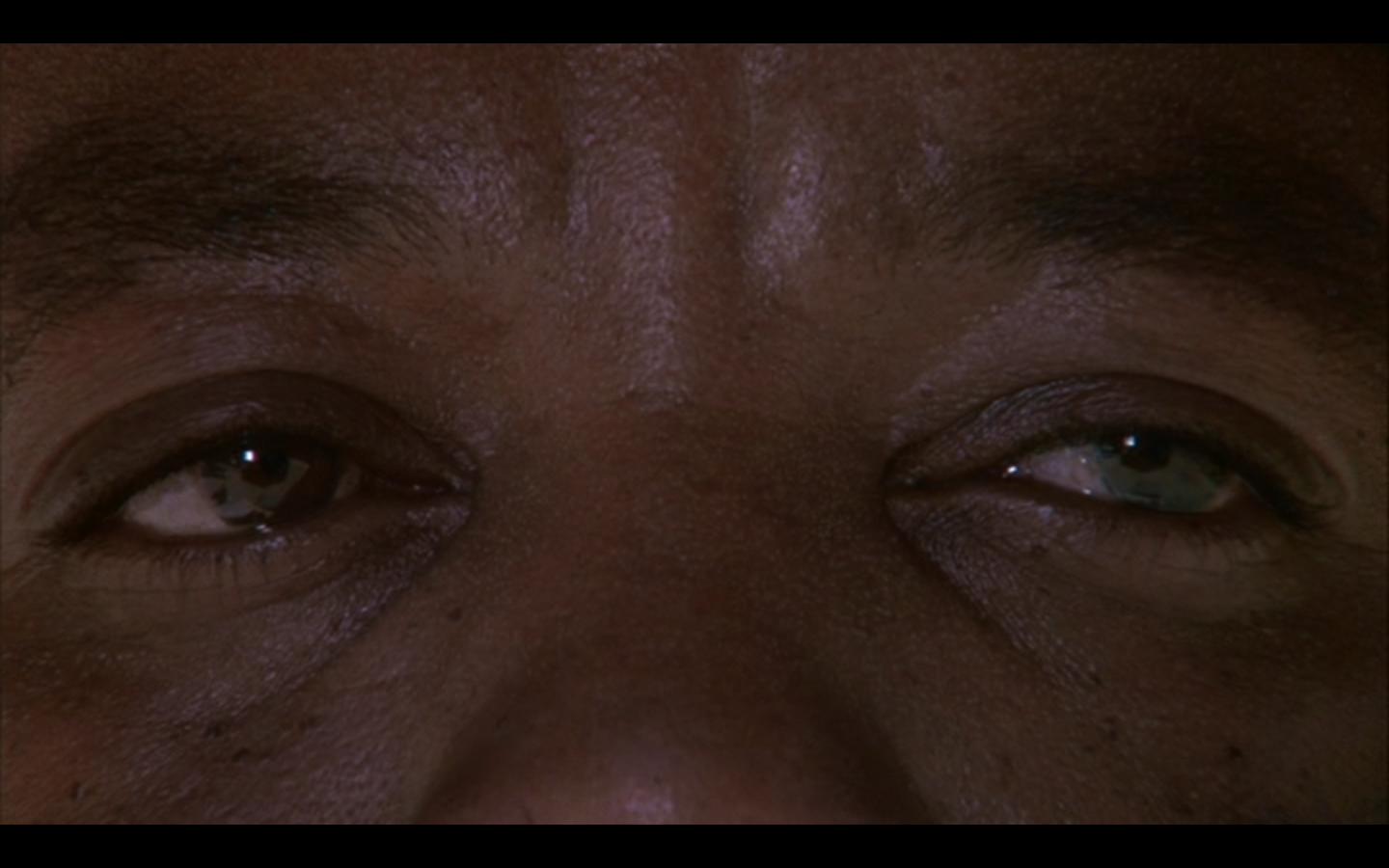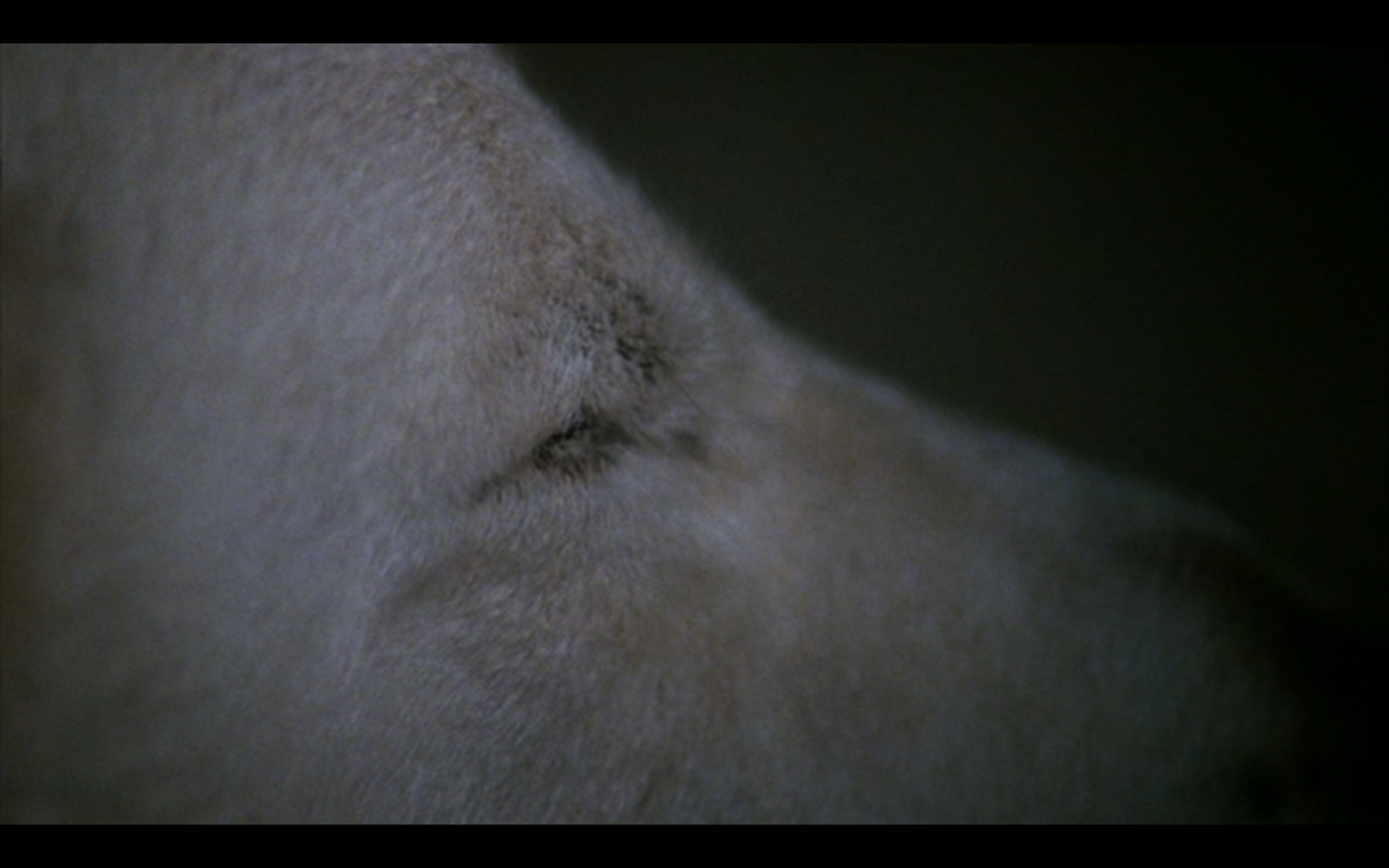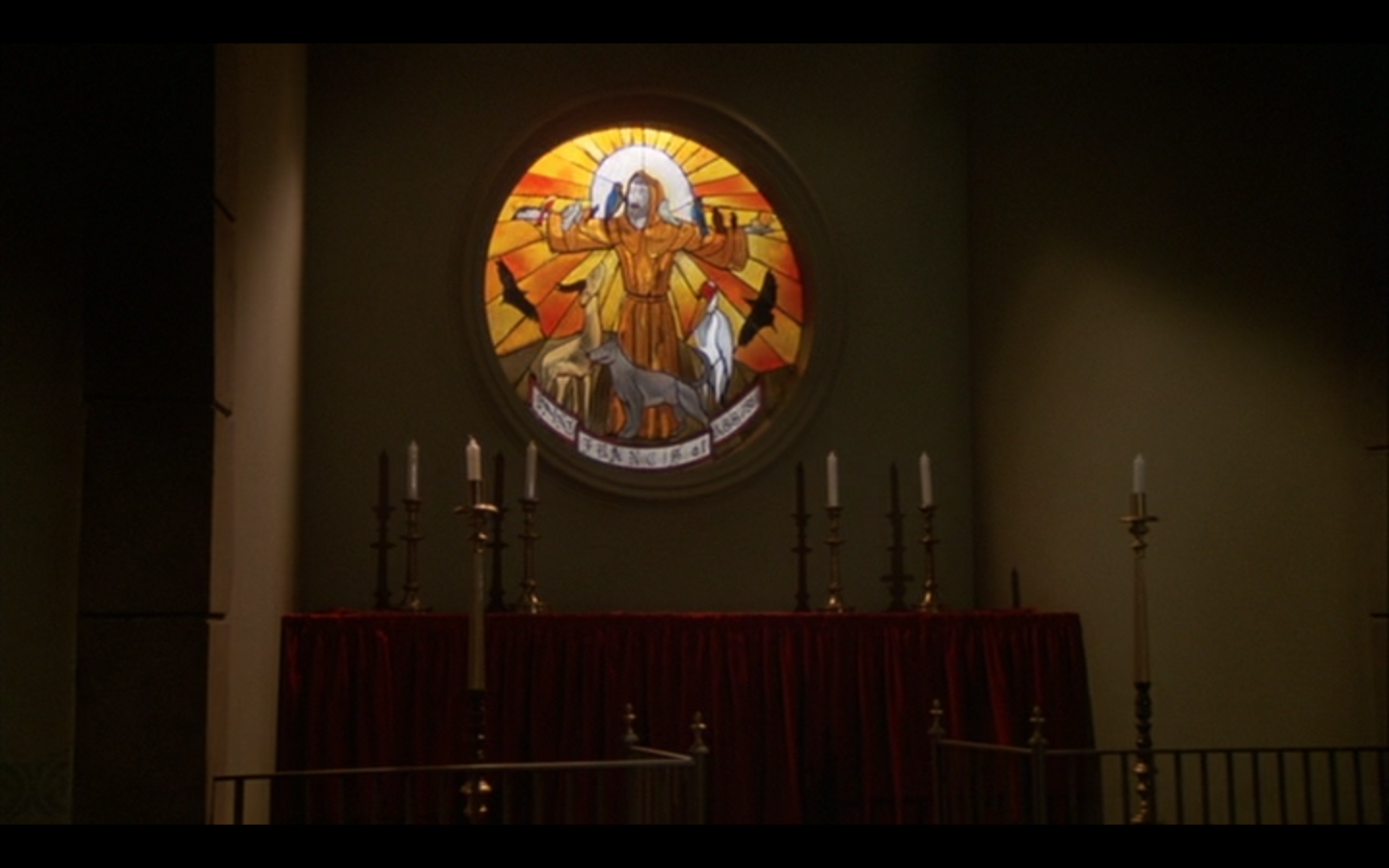Kevin
Smock
25
March 2014
Samuel
Fuller’s 1982 release, White Dog, proved
that he had lost zero of his spark since his hey-day of the 1960s. One might
expect that through the years a filmmaker might lose touch with contemporary
audiences, but this couldn’t really be the case with Fuller. If anything, he
was far more ahead of modern standards. If anyone has seen the first scene of The Naked Kiss, they’ll know exactly
what I’m talking about. Not to mention, Fuller seems to often incorporate
relevant social issues into his films. For example, the three allegorical
mental patients in Shock Corridor convey
Fuller’s attitude towards three certain topics: racism, war, and nuclear
weapons. It seems it would be hard for a man like Samuel Fuller to fall off
into the wayside being that his movies are full of such controversy, full of
such emotion. To quote him: “Film is like a battleground... Love, hate, action,
violence, death. In one word, emotion!” (If anyone has seen Jean-Luc
Godard’s Pierrot Le Fou, this quote may sound familiar… along with Fuller,
due to his cameo in the film). The wonderful thing about White Dog is the fact that it’s ideology moves right along with the
plot, entertaining viewers while also educating them on a certain human
tendency: racism. On a narrative, thematic, and visual level, White Dog is an all around strong film.
The
story concerns a young actress named Julie who accidentally runs over a big,
white German Sheppard one night. After treating it at the vet and putting up
posters in hopes of getting the dog back to its owners, Julie becomes
emotionally attached to the dog as it saves her life from an intruder who is
physically abusing her. Also in act one, the dog runs away - the audience
witnesses it maul apart an African American public works employee. At this
point we are convinced of the violent ways of the canine. Also, the ominous
musical motif that kicks in whenever the dog is eyeing its next victim down
helps illustrate the bestial nature of the pup. Days later, after the dogs
returns, Julie brings it to one of her acting gigs where the dog attacks her
fellow actress friend. Julie is now aware of the vicious behavior of the dog,
however, the audience is still one step ahead of her because now a discernible
pattern has developed – the dog only attacked two people thus far, both African
Americans. Julie brings the dog to a training service where she learns a piece
of information that overtly propels us into act two – The pup attacks
one of the trainers, another African American. Being that it doesn’t threaten
any of the Caucasians surrounding him, the group of trainers declares that the
dog is a white dog, it was trained to attack African Americans. Keys, one of
the African American trainers, insists on training the dog despite the advice
given from his boss. The opposing
forces are exemplified concisely by the visuals:
Later
on in the movie Julie talks with Keys and Carruthers about how Keys got
involved in his field of study. His parents are brought up and Keys elaborates
on the fact that they’re both Anthropologists, something he could never do. However,
what Keys does in this movie is not far from what his parents study: human
behavior. Clearly, to Keys, as a diegetic attribute of the film, he doesn’t
view what he’s doing more than just curing a dog of an unfortunate disorder.
However, to an audience understanding the meaning of the film, he is
essentially fulfilling an exercise in anthropology because we recognize the dog
as a metaphor for society as a whole. Also, an interesting observation
concerning the progression from act one to act two is the fact that Julie’s
acting career is synonymous with the dog’s behavior. Before the dog attacks the
street sweeper, Julie is confident in getting the role she auditioned for,
similar to our feelings about the dog because he saved Julie. However, after
the dog has attacked the street sweeper, she gets a call from her agent or
someone of the sort (played by Sam Fuller himself) and he tells her that she
didn’t get the role because one of the other actress’s had the role tied in because
she knew somebody. It’s incredibly unfair that another actress got the role due
to the corrupt nature of the business… it’s almost similar to how unfair racism
is, no? But I digress, after a series of ups and downs with the dog, Keys and
some of the other trainers are convinced that the dog is beginning to abandon
its old ways. However, one night the dog escapes from its cage and is now able
to roam around freely. The central crisis of the film occurs when the
white dog encounters a black man walking down the street. The pup chases the
man into a quiet little church where the man is then mauled to death. Upon the
discovery of the body, Julie wants the dog killed while Keys still has
confidence in the dog and wants to break it of its racist ways. After many more
disciplined hours of training, Keys is convinced that the dog can live in
harmony. The pup now gets along great with Keys and Keys even has another
African American encounter the dog without even gaining a single scratch. However,
as often times seen in the film, we see the dog behave in peculiar ways when no
other characters are around which makes us have our doubts about it. This film
does a wonderful job with unrestricted story knowledge and leaving the audience
to anticipate action to come. For instance, the fact that he’s seen on more
than one occasion trying to make a hole in his cage leads the audience to
believe he’s not cured. When Julie, Keys, and Carruthers are enjoying a meal in
celebration of the dog’s healing process, Carruthers states, “To the
hamburger,” which refers to the dogs acceptance to eat from a black man’s hand.
However, immediately after we see that, the film cuts to a shot of the dog
growling at the burger and pawing it away.
While
the main characters are convinced of the dog’s reversal, the audience still has
their doubts – classic dramatic irony. At the climax of the narrative, Keys
once again puts the dog to the test of whether or not he’ll attack an African
American. The dog storms full-speed towards Keys, looking as if he’s going to
kill him, but then stops and playfully pants at him. Then, the dog darts
towards Julie, looking as if he’s going to kill her, but does the same thing
and just pants. Then finally, the dog storms towards Carruthers and actually
attacks him where Keys is then forced to shoot the dog dead.
Unfortunately,
the pessimistic ending of the film is completely necessary and honest because it
states that there will always be hatred and racism on this earth no matter
what. If it’s not aggression towards blacks, then it’s white, if it’s not
whites, then it’s Asians, etc. The moral of the story is that people will never
be absolutely tolerant. White Dog, on
a connotative level, is simply a story about a dog that was trained by bigots
to attack African Americans and then one day a young lady found the dog lost
and hurt and tried to change its ways but could not. However, on a denotative
level, the way in which films should be watched, it is about the human
condition and the harsh truth that the world we live in will never be one
hundred percent accepting of the race/religion/culture of other people. The dog
is simply a metaphor for society throughout the film, an outlet for Fuller’s
views.
White Dog comprises some extremely
clever moments of visual storytelling. My favorite composition in the film
occurs shortly before the central crisis where the dog is loose and wandering
around town, serving as a severe danger. This is exemplified in the following
frame:
Within
the mise-en-scene of this one simple shot the audience experiences so much:
anticipation, raised stakes, dramatic irony, opposing forces, etc.
In
act one, when the dog saves Julie from the intruder, Fuller employs editing,
sound, and camera movement just wonderfully. Three units play upon one another
during the scene: The television screen playing a war film, the dog sleeping,
and Julie reading on her bed. The camera moves enigmatically from the
television screen into the hallway leading into Julie’s room. The audience ends
up observing Julie on her bed over the shoulder of a stranger. The intruder
takes Julie to the ground but she puts up a good fight. As their fight fires
on, so does the battle on the television screen. Images of the fight, the TV,
and the dog sleeping are cut among one another creating a wild feeling of
anticipation and anxiety.
Finally,
when the battle on the TV screen comes to an end so does the battle between
Julie and the intruder because the TV has hushed up enough for the dog to hear
the ruckus and wake up and put a halt to it, which provides a feeling of relief
for the audience.
Another
wonderfully cut scene occurs at the central crisis of the film, when the dog
kills the innocent black man. Fuller suggests the action to come by cutting
between these two shots, which demonstrate the opposing forces:
Look
familiar? Ever see Hitchcock’s Strangers
on a Train?
After a brief sequence of the dog chasing the man concludes with the gentleman running into a church to seek safety.
However,
the dog tackles him through the doors and begins to maul him. Instead of
overtly showing the man being bitten apart, Fuller wittily moves his camera
upwards and shows statues of religious figures praying.
Camera moves to this:
Not
only is it ironic but again, the contrast of the sound is subtly wonderful. Agonizing
shouts of a man vs. the languid sounds of the suburbs.
White Dog is a sad movie with a sad ending, but it’s an absolute
relief that there are (or were) filmmakers out there that are bold enough to
speak out against such imperative manners, and in such a clever way… Upon its
release racism was, according to the nation, said to be a thing of the past. However,
many know that is not the case. Social injustices and prejudice behavior
existed far after the disperse of the civil rights movement, it just wasn’t
recognized nationally as an issue. For Fuller to bring up a topic so delicate
and to handle it so boldly deserves an immense amount of respect. And like the
film suggests, mankind will never see a day where bigotry does not exist. And
like the characters in the film exemplified, people have to go one fighting the
good fight against it.

















